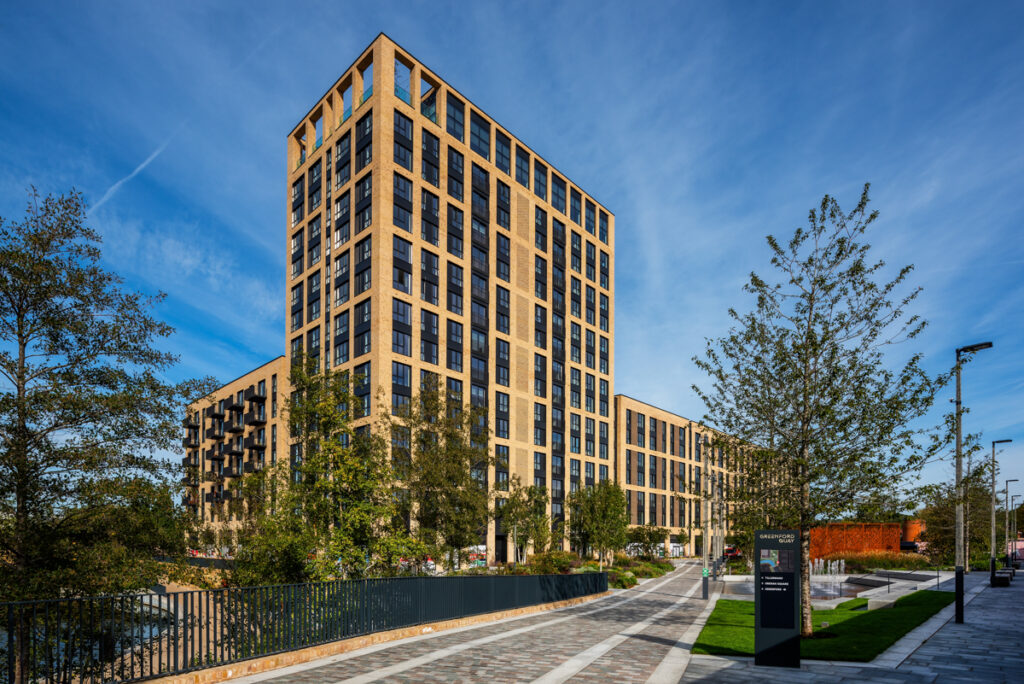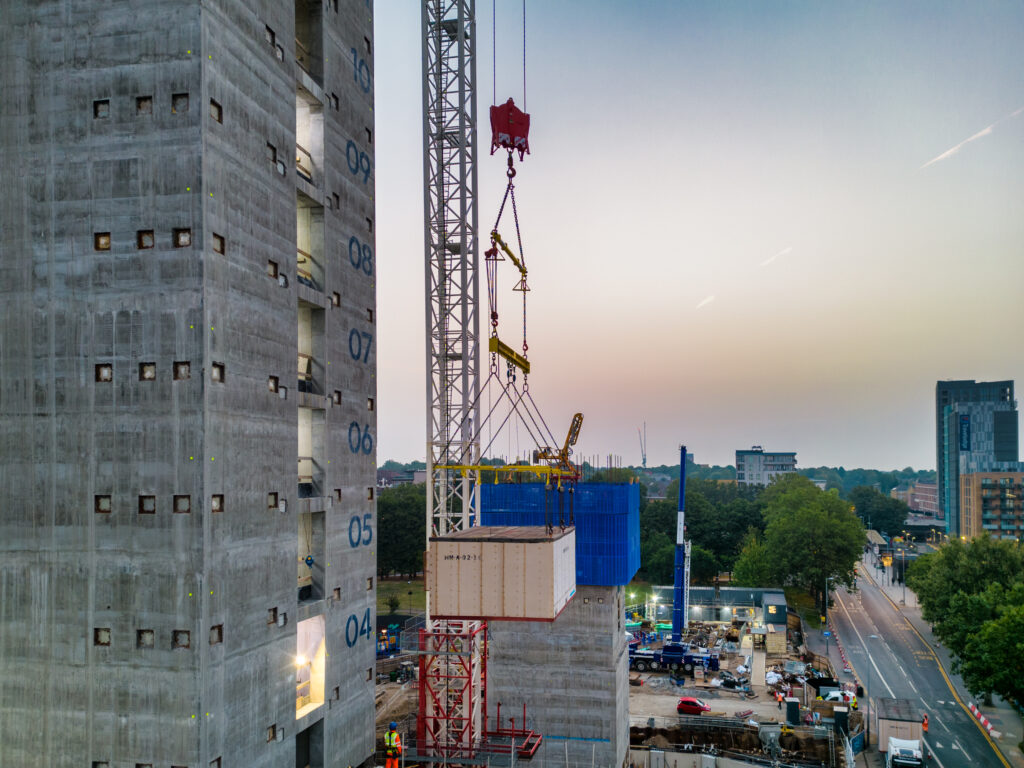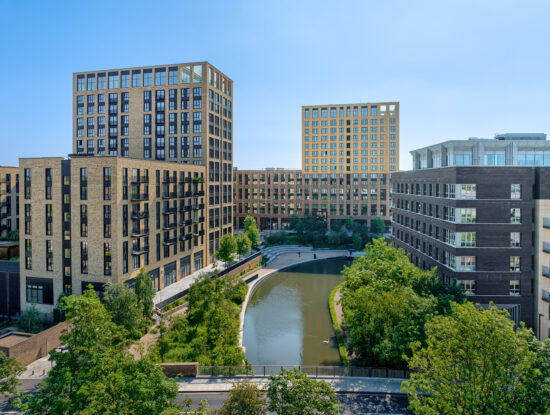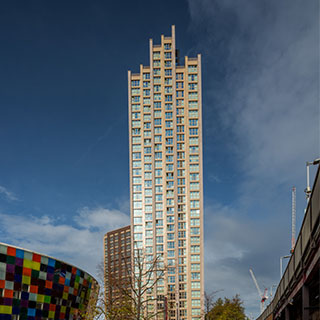Tide’s CEO Christy Hayes speaks to React News about its most recent development College Road and the company’s track record in delivering high quality schemes.
On an interview with Jessica Middleton-Pugh, Residential and Retail editor, and Natasha Voase, reporter, Christy discussed Tide and Vision’s origins and business model, and what separates them from other players in the industry.
“What make us different is we were builders that had already developed a lot, identified the shortcomings in traditional construction maybe 15 or 18 years ago, and developed a system to address those shortcomings. The fact that we’re vertically integrated helps greatly, as we’re developers, contractors and offsite manufacturers. Our product is mortgageable, fundable and fully insurable: that was one of the first things we made sure to put in place.
“We’re finding we have a lot of repeat business. All the institutional funders from around the world seem to like our model, and the quality-controlled aspects particularly around fire safety.
“We’re quite fortunate that we have 3,500 homes on-site at the moment. We have one factory in Bedford that’s at full capacity. We have a second factory in Wales that we’re just going through commissioning. You have to acknowledge to that the financial world is a bit challenging at the moment, so our pipeline is very strong given that context. I think the fact that we deliver faster, at scale, means that at a time when development programmes are so much more cost sensitive with land costs and finance cost changes, we become more viable from an investment point of view.

Greenford Quay, BTR Scheme in Ealing, London
“We’ve actually done quite a number of lower-rise schemes as well as towers. We’re building 2,000 units out in Greenford where the average height is seven storeys. We developed our system to be adaptable to whatever height. But certainly, houses have not previously been our target market. However we’re looking at developing other systems based on the success of our businesses, diversifying maybe into housing based on the skill set we’ve got. However, you can see when you go on our high-rise sites that we do have an advantage with unlocking those schemes too – a £200m contract can involve a maximum of 150 people on the site. So it has its advantages on all scales.
“A lot of the schemes that we get involved with are designed traditionally, but the flexibility of our system doesn’t limit the architect whatsoever with regard to facades or layouts. We get involved with the client from planning permission or whatever stage of design, and can then ‘modularise’ it, so all their specifications are for that project.
“What people like about us is the certainty of cost, certainty of quality and certainty of programme. That’s what the big financial institutions want”
“As our developing entity, we purchase sites, we get planning, and then typically we sell that on a forward fund. That’s a considerable part of our business. Then we have a third-party business as well, a contracting business that as it happens, has partnered with a lot of the same people we have done forward funding with.
“We have to purchase sites, which we do out of our own resources. The organisation has very, very little debt. If you look at our partners, PSP, Henderson Park, Ivanhoé Cambridge, M&G to name but a few, we’ve been through quite a bit of due diligence with those. You have all the building warranties, and we’ve dealt with all the high street finance or pension funds at some point. There’s absolutely no difference in our financing, if anything it maybe a little bit easier because of the risk profile and programme that might apply to it.

The Mall site in Walthamstow, London
“We have had quite a bit of interest because of the internal rate of return on the investment. If you’re getting your rental income back in a year and a half, that’ll get you through the finance committees, and the large institutions like the certainty as well.
“Because we control our volumetric buildings and our production line, we enter into a contract with our volumetric company at day one. We build a prototype in our factory, and all the interiors are finalised, so at that stage we can talk to our supply chain and fix the price of everything. That gives us a huge advantage. There’s 1,726 modules in our most recent building, for example, so we want our clients to know that they’re happy with everything in it before we start manufacturing.
“We wanted to learn how to walk before we ran, and to have reasonably good projects to show people with a reasonably stable and progressing pipeline. Now we’re looking at the regions, we’re talking to people in Manchester; there’s a student accommodation project we’re looking at. Certainly, we’re looking at Birmingham, Manchester and Bristol.
“We need to get away from this idea of standardisation. You have a modern method of construction that is flexible to the aesthetic of the building, it doesn’t constrain the aesthetic of the building or the layout. The myth is prefabs are of poor quality and repeat boring designs. Whereas we are saying they are of equal or better quality, and positively impact the sustainability agenda. We are engaging with Cambridge University and we’ve carried out numerous studies on our completed buildings, where we’ve demonstrated over 45% less embodied carbon and we’re typically meeting the 2030 standards already.”
Christy Hayes, CEO Tide & Vision










